New Zealand HPI Implementation Guide, published by Ministry of Health. This is not an authorized publication; it is the continuous build for version 0.9.0). This version is based on the current content of https://github.com/HL7NZ/hpi/ and changes regularly. See the Directory of published versions
Usecases
Read Practitioner with Identifier (CPN)
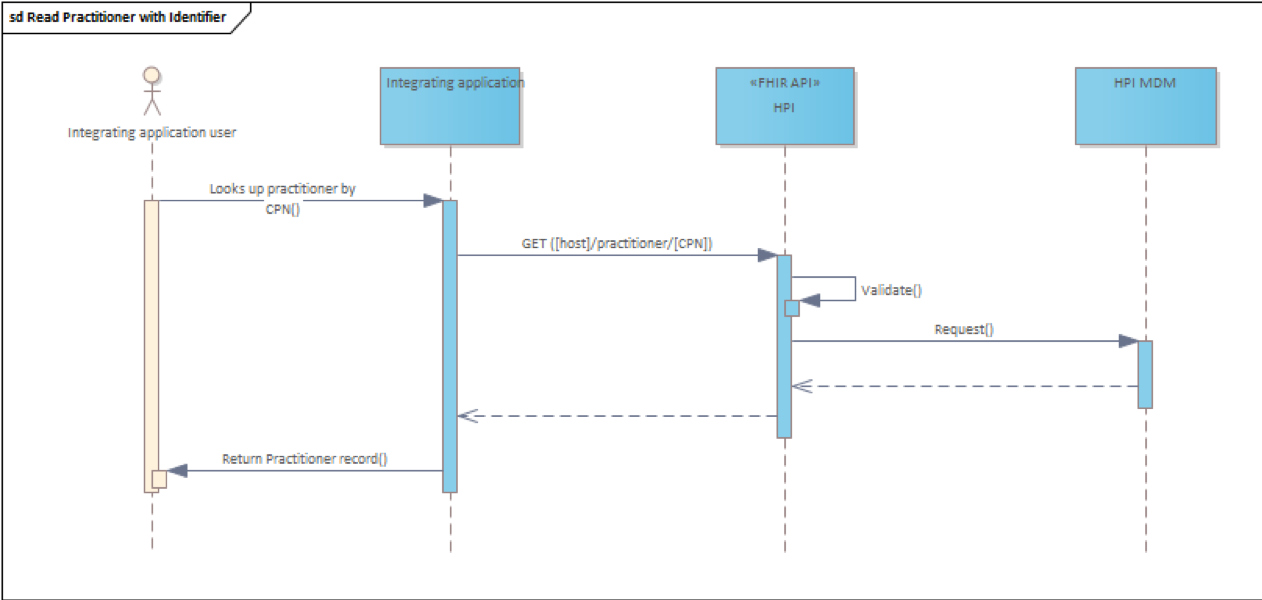
Read practitioner processing steps:
- The user supplies a CPN number for the practitioner to be looked up.
- The integrating application sends an HTTP GET request for the Practitioner resource using the CPN to identify the practitioner whose information is being requested. E.g. GET https://hpi.api.health.govt.nz/practitioner/99ZZZZ
- The request is validated - ALT: Validation failure. OperationOutcome resource returned
- The Practitioner resource is retrieved from the HPI - ALT: Practitioner not found. OperationOutcome resource returned
- The response containing the Practitioner resource is returned
Query Practitioner with another identifier (e.g. Nursing Council Number)
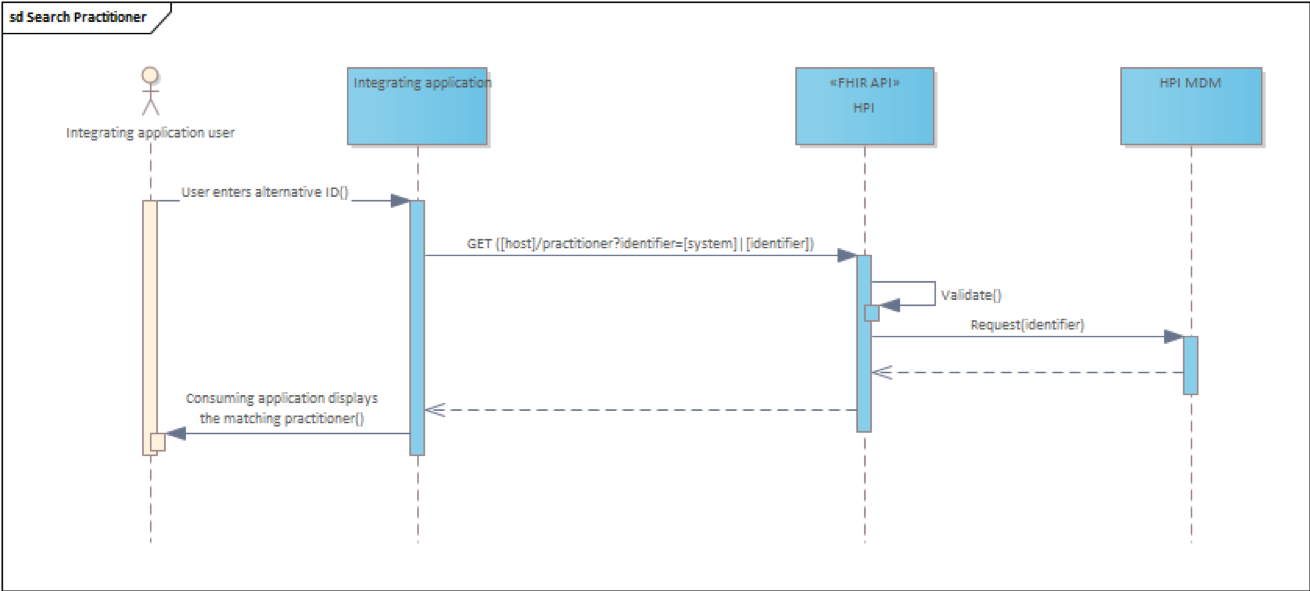
Read practitioner processing steps:
- The user supplies a nursing council number for the practitioner to be looked up.
- The integrating application sends an HTTP GET request for the Practitioner resource using the nursing council id to identify the practitioner whose information is being requested. E.g. GET https://hpi.api.health.govt.nz/practitioner?identifier=https://standards.digital.health.nz/ns/nursing-council-id|999999
- The request is validated - ALT: Validation failure. OperationOutcome resource returned
- The Practitioner resource is retrieved from the HPI - ALT: Practitioner not found. OperationOutcome resource returned
- The response containing the Practitioner resource is returned
- The integrating application displays the matching practitioner to the user
Search Practitioner using name and DoB
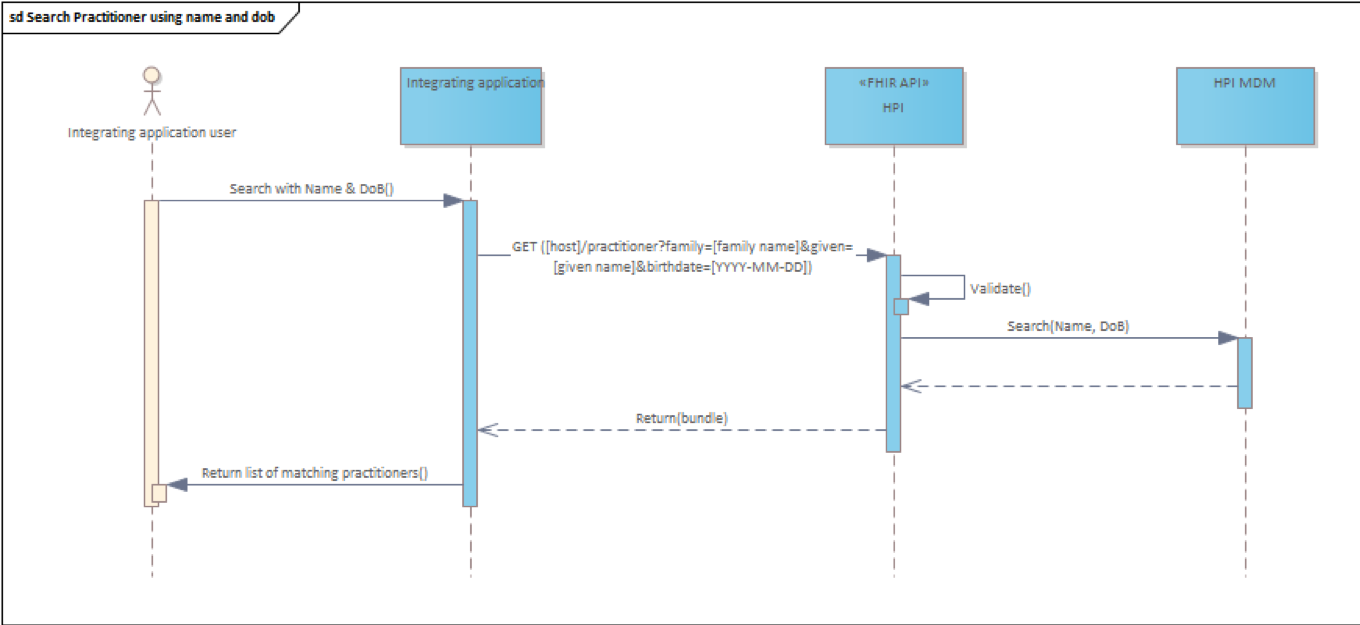
Search practitioner processing steps:
- The user of the integrating application searches for a practitioner by entering the name and date of birth.
- The integrating application sends an HTTP GET request for the Practitioner resource using the family and given name, and birthdate elements as search parameters E.g. GET https://hpi.api.health.govt.nz/practitioner?family=smith&given=nikau&birthdate=2001-01-01
- The request is validated - ALT: Validation failure. OperationOutcome resource returned
- The matching practitioners are retrieved from the HPI
- The response containing a bundle of matching practitioners is returned to the integrating application
- The integrating application displays the matching practitioners the user
Update contact details or end-date on a PractitionerRole
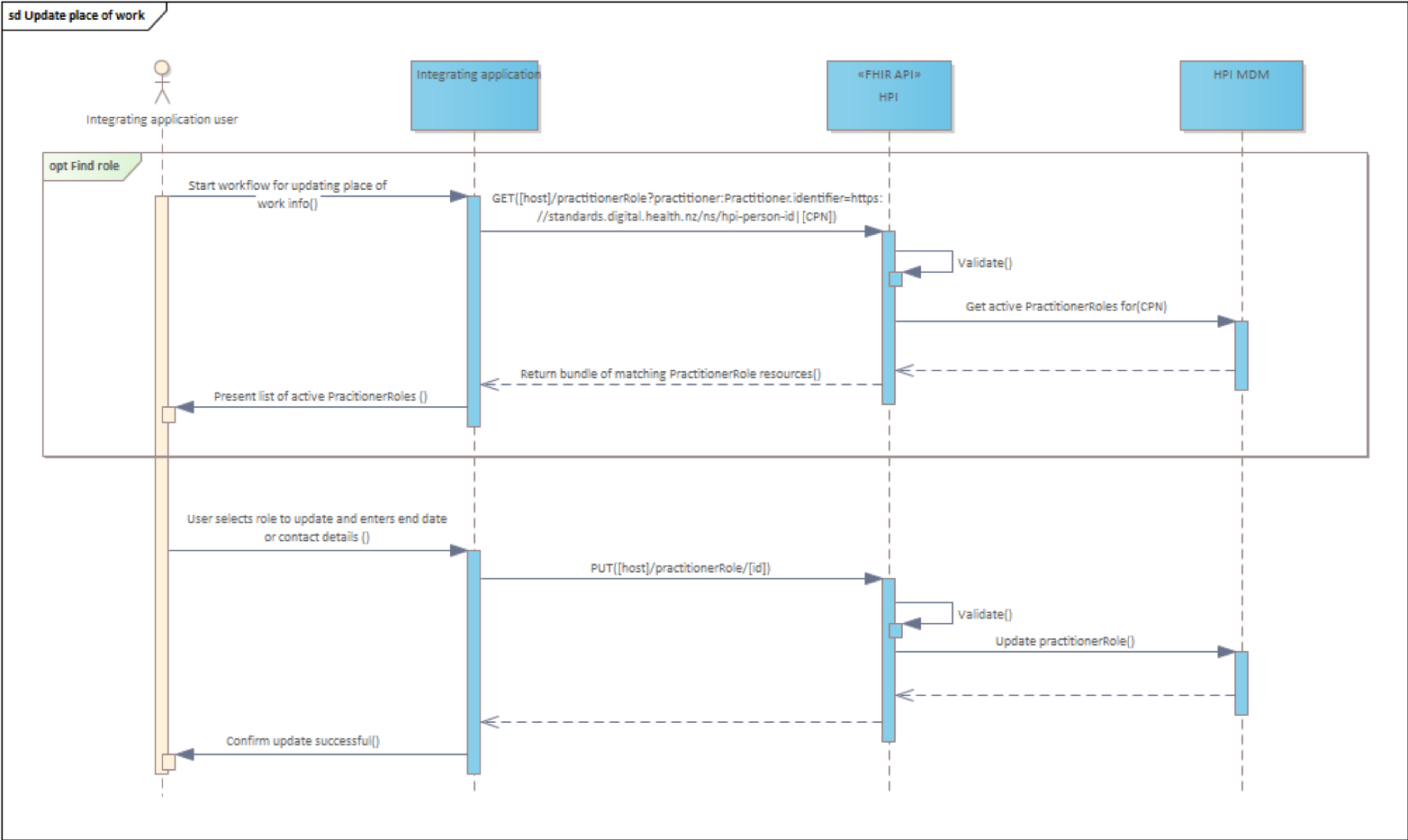
Update PractitionerRole processing steps (steps 1-6 not required if practitionerRole id already known):
- The user initiates updating a PractitionerRole in the integrating application.
- The integrating application sends an HTTP GET request (a FHIR search) for the list of PractitionerRoles referencing the Practitioner resource for the supplied CPN number. E.g. GET https://hpi.api.health.govt.nz/practitionerRole?practitioner:practitioner.identifier=https://standards.digital.health.nz/ns/hpi-person-id|99ZZZZ
- The request is validated - ALT: Validation failure. OperationOutcome resource returned
- The practitionerRoles related to the supplied CPN are retrieved from the HPI - ALT: No practitionerRoles found. OperationOutcome resource returned
- The response containing a bundle of practitionerRole resources is returned
- The consuming application displays the matching roles to the user
- The user selects a role to update and supplies new contact details or an end date.
- The API consumer sends an HTTP PUT request (a FHIR update) containing the previously returned practitionerRole with the new details entered by the user. E.g. PUT https://hpi.api.health.govt.nz/practitionerRole/1234567
- The request is validated - ALT: Validation failure. OperationOutcome resource returned
- The supplied practitionerRole is updated on the HPI.
- The HPI FHIR API confirms a successful update – HTTP 200
- The integrating application indicates to the user the update has been successful.
Add new practitionerRole
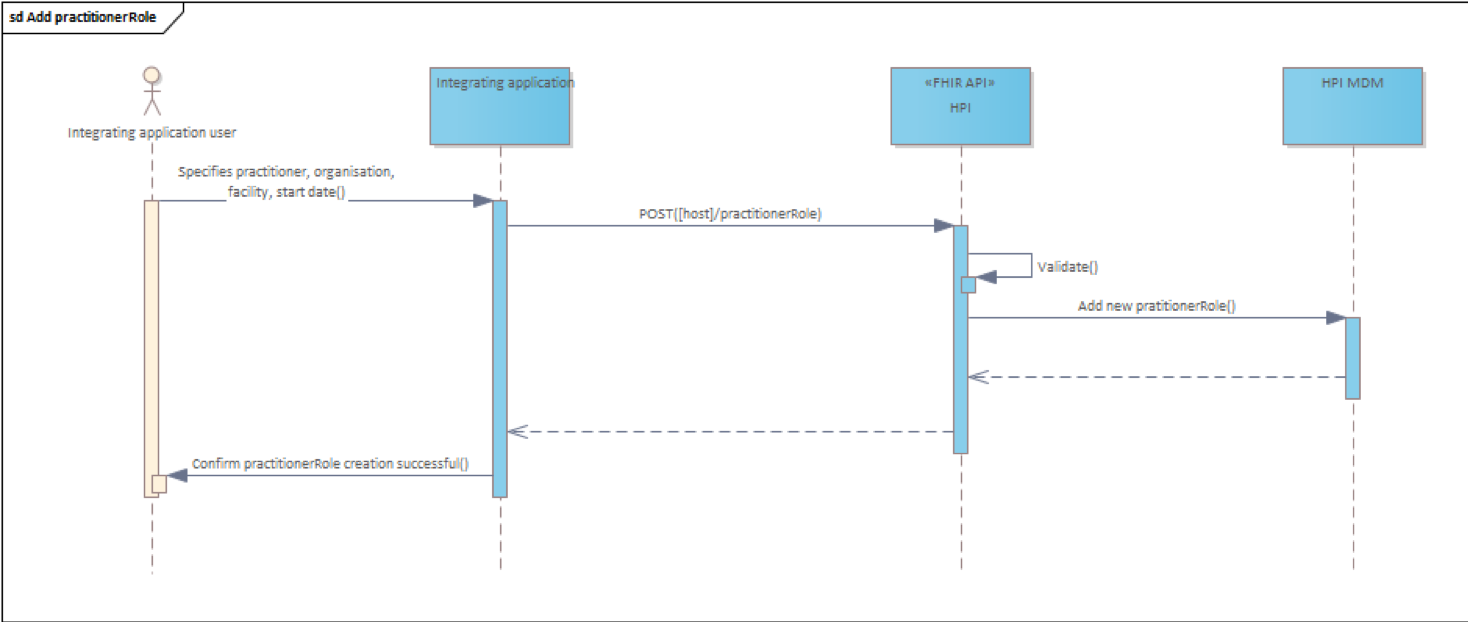
Add new practitionerRole processing steps:
- The user initiates creating a new PractitionerRole in the integrating application
- The integrating application sends an HTTP POST request (a FHIR create) containing the practitionerRole details
- The request is validated - ALT: Validation failure. OperationOutcome resource returned
- A practitionerRole record is created and a PractitionerRole ID issued.
- The HPI FHIR API confirms a successful update – HTTP 200
- The integrating application indicates to the user the create has been successful.
- The integrating application retains the PractitionerRole ID for subsequent update requests
Lookup EDI for an enrolled patient’s GP
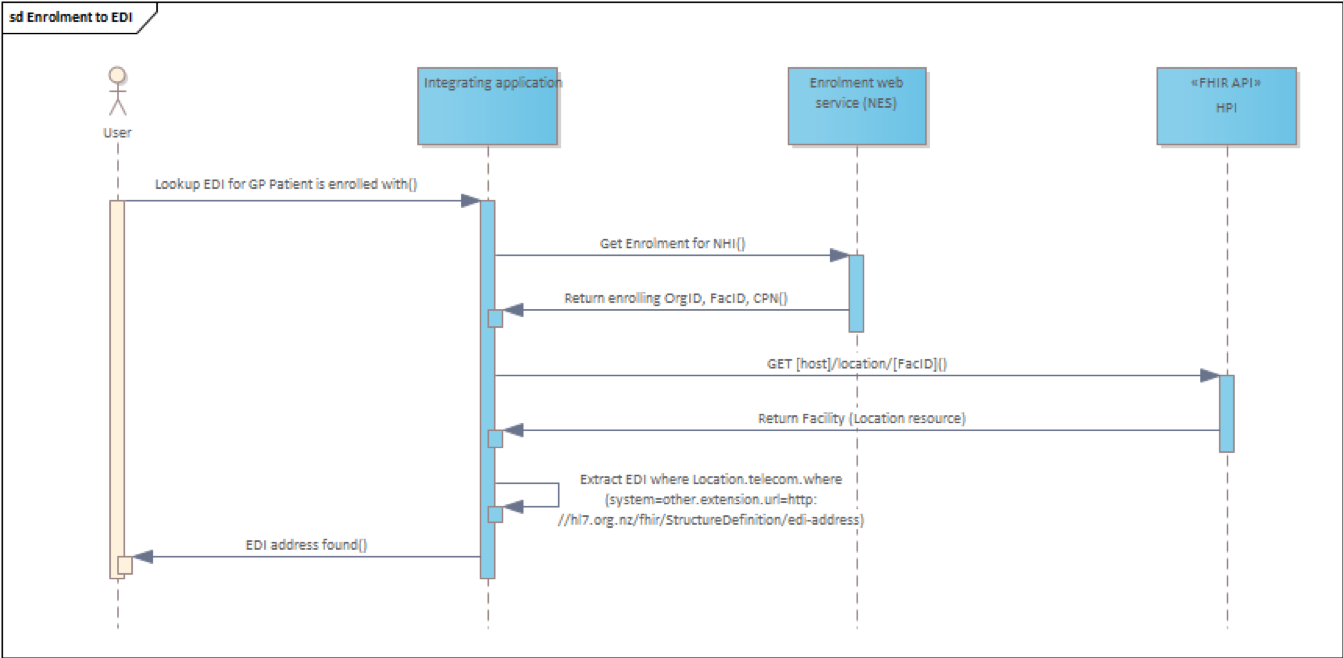
Lookup EDI for an enrolled patient’s GP:
- The user initiates searching for an EDI of a patient’s GP to send something to.
- The integrating application calls the SOAP Enrolment service with the patient’s NHI number.
- The SOAP Enrolment web service returns the enrolment for a patient containing the OrgID, FacID, and GP’s CPN.
- The integrating application sends a read request for the Facility (location resource) using the FacID to the HPI FHIR API. E.g. GET https://hpi.api.health.govt.nz/location/ F99999B
- The requested is validated - ALT: Validation failure. OperationOutcome resource returned
- The location resource is returned from the HPI.
- The integrating application extracts the telecom’s ContactPoint containing the EDI number for